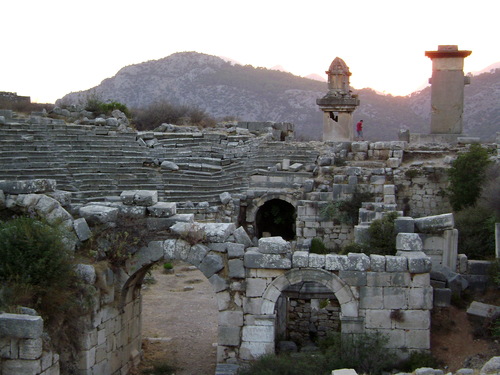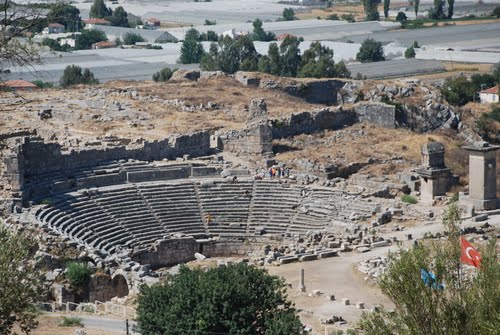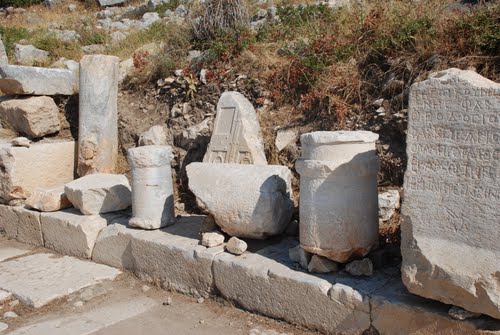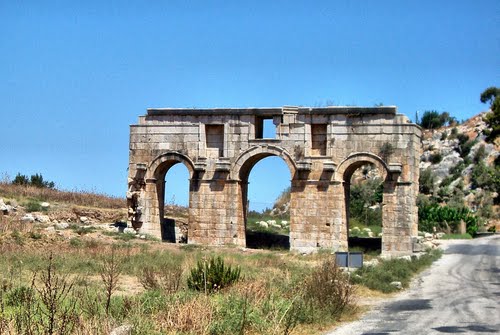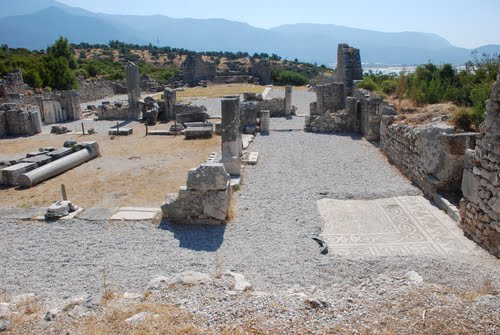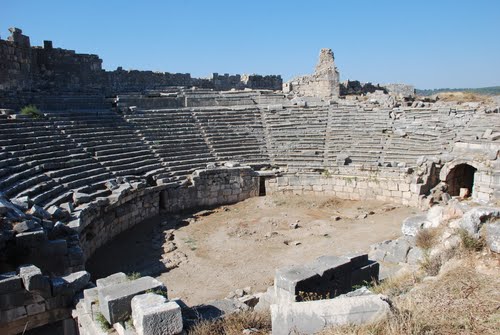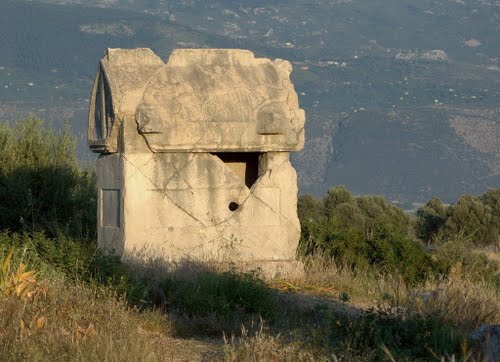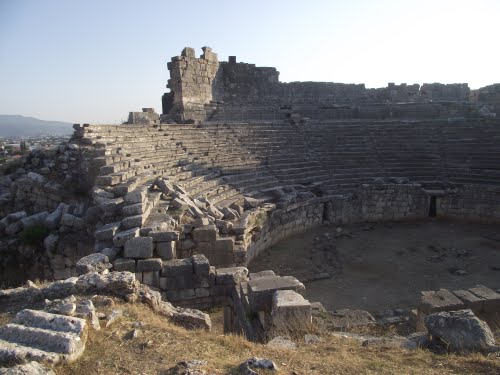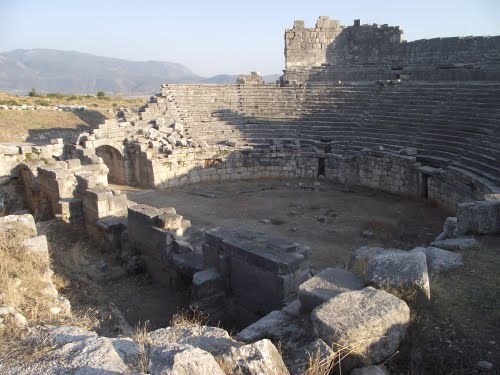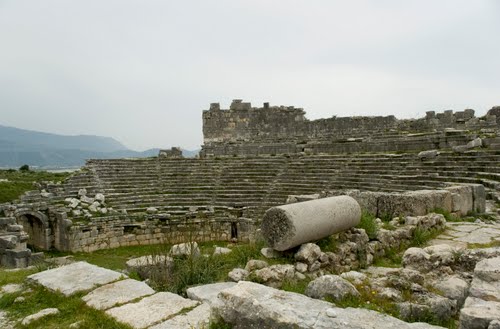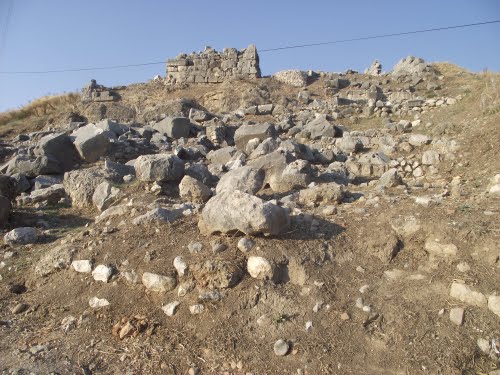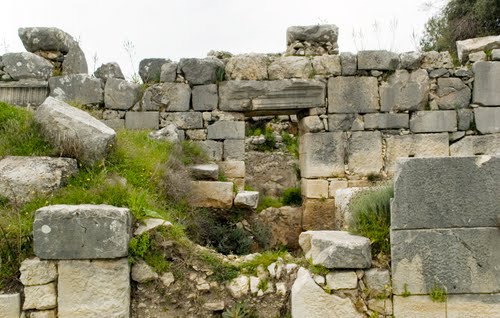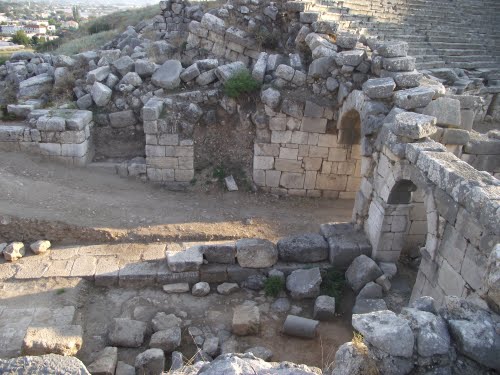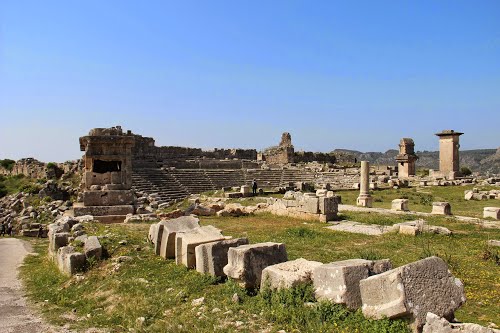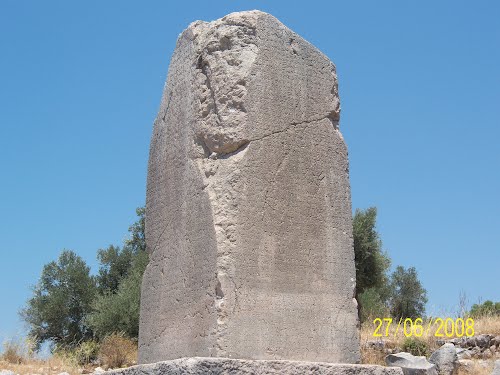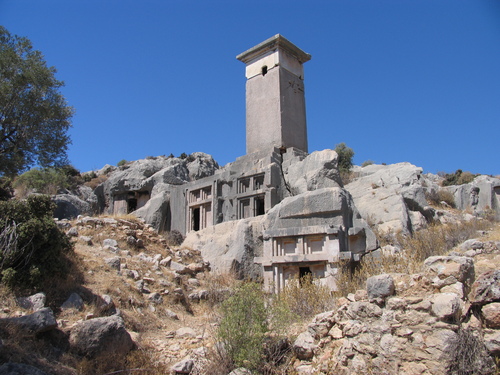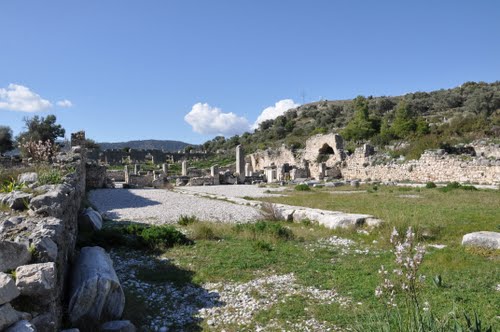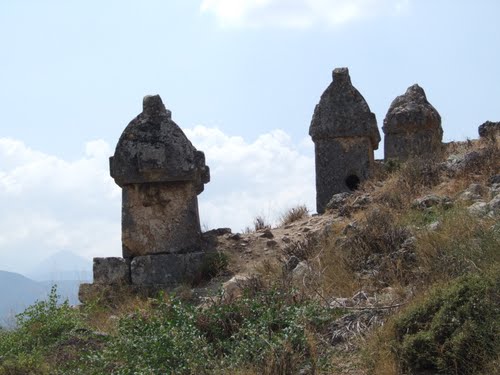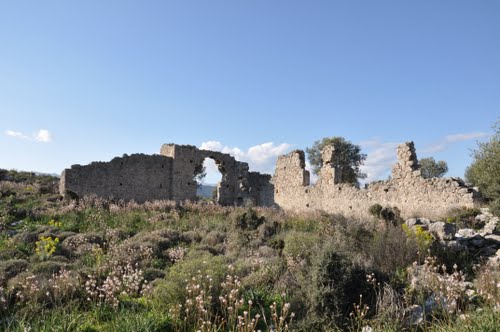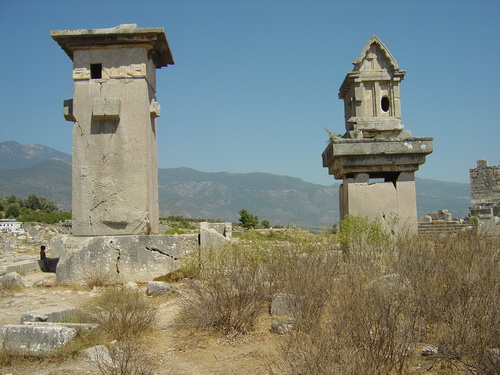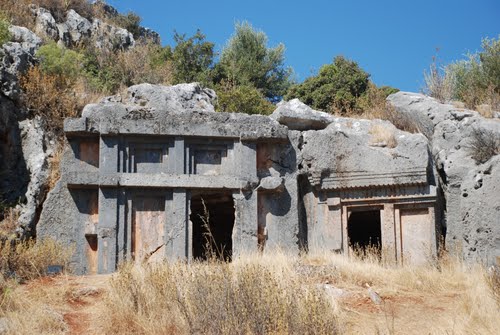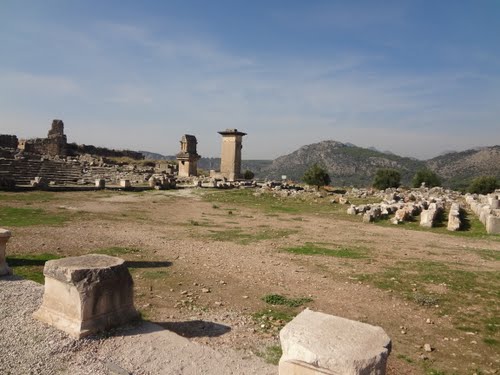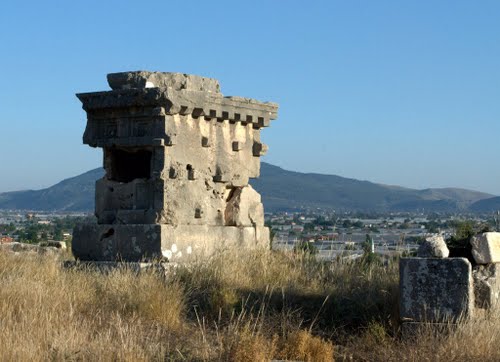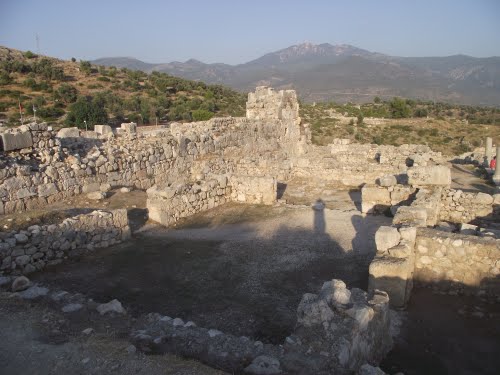Xanthos was the name of a city in ancient Lycia, the site of present-day Kinik, Antalya Province, Turkey, and of the river on which the city is situated. The ruins of Xanthus are on the south slopes of a hill, the ancient acropolis, located on the northern outskirts of the modern city, on the left bank of the Xanthus, which flows beneath the hill. A single road, Xantos yolu, encircles the hill and runs through the ruins.
Xanthos is the Greek appellation of Arnna, a city originally speaking the Lycian language. The Hittite and Luwian name of the city is given in inscriptions as Arinna (not to be confused with the Arinna near Hattusa). Xanthos is a Greek name, acquired during its Hellenization. The Romans called the city Xanthus, as all the Greek os suffixes were changed to us in Latin. Xanthos was a center of culture and commerce for the Lycians, and later for the Persians, Greeks and Romans who in turn conquered the city and occupied the adjacent territory. After the fall of the Byzantine Empire in the 15th century, the region became Turkish. The ancient city had long since been abandoned.
As the center of ancient Lycia and the site of its most extensive antiquities, Xanthos has been a mecca for students of Anatolian civilization since the early 19th century. Many important artefacts were found at the city. Two tombs, the Nereid Monument and the Tomb of Payava, are now exhibited in the British Museum. The Harpy Tomb is still located in the ruins of the city. A sanctuary of Leto called the Letoon is located on the outskirts of the city to the southwest. The Xanthian Obelisk and the Letoon trilingual are two trilingual stelae which were found in the city and the Letoon. The site has been designated as a UNESCO World Heritage Site since 1988.

